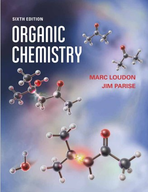In a laboratory are found two different compounds: A (melting point 24.7 C) and B
Chapter 10, Problem 10.58(choose chapter or problem)
In a laboratory are found two different compounds: A (melting point 24.7 C) and B (melting point 21 C). Both compounds have the same molecular formula (C7H14O), and both can be resolved into enantiomers. Both compounds give off a gas when treated with NaH. Treatment of either A or B with tosyl chloride in pyridine yields a tosylate ester, and treatment of either tosylate with potassium tert-butoxide gives a mixture of the same two alkenes, C and D. However, reaction of the tosylate of A with potassium tert-butoxide to give these alkenes is noticeably slower than the corresponding reaction of the tosylate of B. When either optically active A or optically active B is subjected to the same treatment, both alkene products C and D are optically active. Treatment of either C or D with H2 over a catalyst yields methylcyclohexane. Identify all unknown compounds and explain your reasoning
Unfortunately, we don't have that question answered yet. But you can get it answered in just 5 hours by Logging in or Becoming a subscriber.
Becoming a subscriber
Or look for another answer
